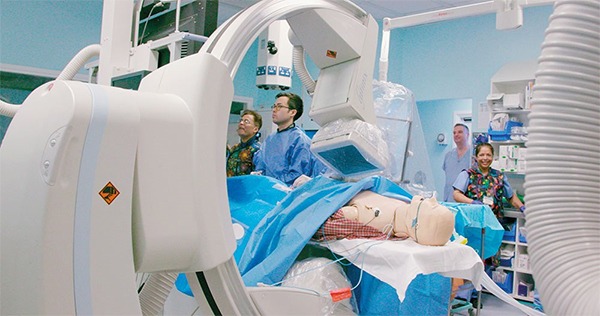 Laerdal Medical has announced the launch of their new simulation training technology, SimMan Vascular. The company has partnered with endovascular simulator developer Mentice to produce the SimMan Vascular system, which was introduced at the Simulation User Network conference (SUN; 30 April–2 May, Schaumburg, USA).
Laerdal Medical has announced the launch of their new simulation training technology, SimMan Vascular. The company has partnered with endovascular simulator developer Mentice to produce the SimMan Vascular system, which was introduced at the Simulation User Network conference (SUN; 30 April–2 May, Schaumburg, USA).
The company states that the prevalence of diagnostic and therapeutic endovascular procedure makes it essential to have a simulation training solution in response, and that their new technology will support the multidisciplinary team training and skills practice required.
Built on Laerdal’s SimMan 3G platform with Mentice’s VIST endovascular simulation technology inside, SimMan Vascular is an integrated emergency patient and endovascular procedure simulator. The simulator can help to provide immersive training to all members of the acute care team, including; endovascular specialists, cath lab teams, interventional radiologists, resuscitation teams, and pre-hospital care providers. It incorporates all aspects in the critical care areas of vascular trauma, acute myocardial infarction and acute ischaemic stroke.
The system provides endovascular access as well as advanced cardiovascular life support and treatment capabilities, including quality cardiopulmonary resuscitation feedback, convulsions, bleeding and wounds, RFID technology for administered medications and airway devices, and reactive eyes. The Mentice user interface is integrated into Laerdal’s LLEAP software, allowing:
- The use of real clinical/operation devices
- Simulated fluoroscopy and a 3D color mode
- A dynamic patient monitor
- Recognition of drug administration
The simulator comes with scenarios for acute myocardial infarction, acute ischaemic stroke, and vascular trauma. All scenarios are designed with team training in mind, the company states, to help improve time management, decision making, communications, and transitions through each level of care—from the onset of symptoms to the cath lab.













